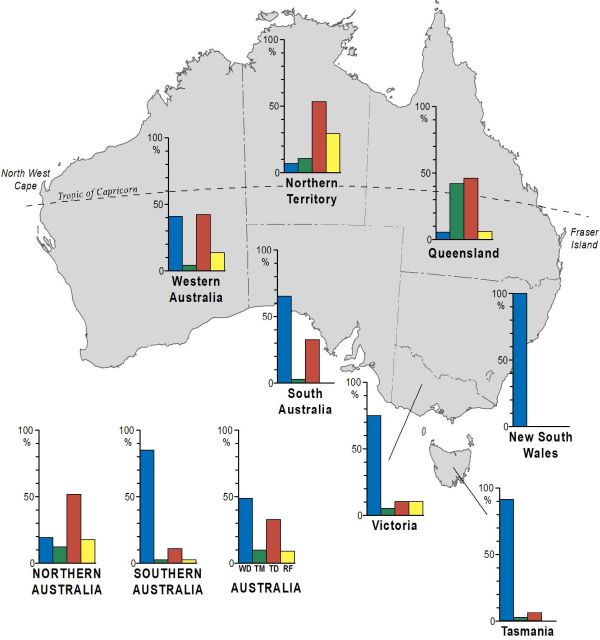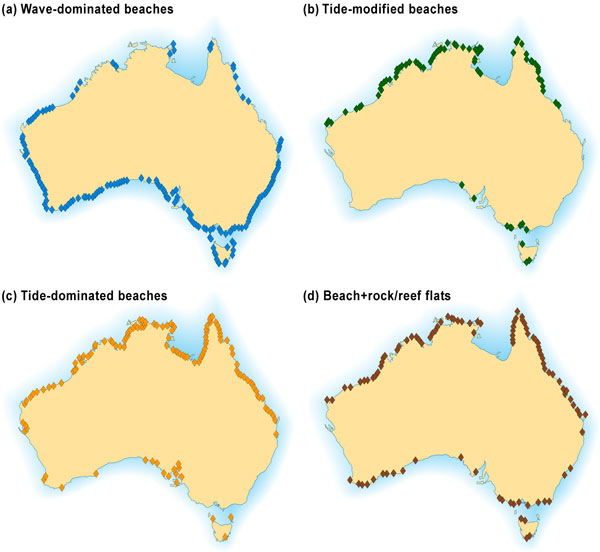The Australian coast contains 10,685 beach systems, which occupy half the coast (around 15 000 km) and can be classified into 15 beach types [1]. Of the beach types, there are six wave-dominated, three tide-modified, and four tide-dominated types which are a product of wave-tide and sediment conditions. There are also two types which are influenced by intertidal rocks and fringing reefs. Wave-dominated beaches occupy the higher energy, microtidal southern coast exposed to persistent Southern Ocean swell (Figures 1 and 2). Tide-modified and tide-dominated beaches occur most frequently around the tropical northern coast as well as some sheltered and mesotidal southern locations (Figure 1 and 2). The tropical northern coast area experiences meso-, macro-, and mega-tides and receives lower seas.

Figure 1. State, regional, and Australian distribution of wave-dominated (WD blue), tide-modified (TM green), and tide-dominated (TD red) beaches and beaches with rock/coral flats (RF yellow). Note the dominance of wave-dominated beaches in the southern states and tide-dominated in the north.

Figure 2. Australia Beach types distribution. Wave-dominated beaches prevail around the southern half of the continent, while tide-modified and tide-dominated are more prevalent across the northern half. Beaches fronted by rock flats can occur right round the coast, while those fronted by fringing coral reefs are restricted to the tropical northern half.
References
- Short, A D Australian Beach System – Nature and Distribution, Journal of Coastal Research, vo 22, pp11-27, 2006.
- Short, A D and Woodroffe, C D, 2009, The Coast of Australia. Cambridge University Press, Melbourne, 288 pp.
- Short, A D, 1996, Beaches of the Victorian Coast and Port Phillip Bay. Sydney University Press, Sydney, 298 pp.
- Short, A D, 2000, Beaches of the Queensland Coast: Cooktown to Coolangatta. . Sydney University Press, Sydney, 360 pp.
- Short, A D, 2001, Beaches of the Southern Australian Coast and Kangaroo Island. . Sydney University Press, Sydney, 346 pp.
- Short, A D, 2005, Beaches of the Western Australian Coast: Eucla to Roebuck Bay. Sydney University Press, Sydney, 433 pp.
- Short, A D, 2006a. Beaches of the Tasmanian Coast and Islands. . Sydney University Press, Sydney, 353 pp.
- Short, A D, 2006b, Beaches of Northern Australia: The Kimberley, Northern Territory and Cape York. . Sydney University Press, Sydney, 463pp.
Important links
- Surf life Saving AustraliaVisit the Surf Life Saving Australia website for tips on beach safety.
- Coastalwatch Live and local cameras (surfcams) at Australian beaches, surf reports, surf forecasts, news and events.
Author
Andrew Short – University of Sydney


